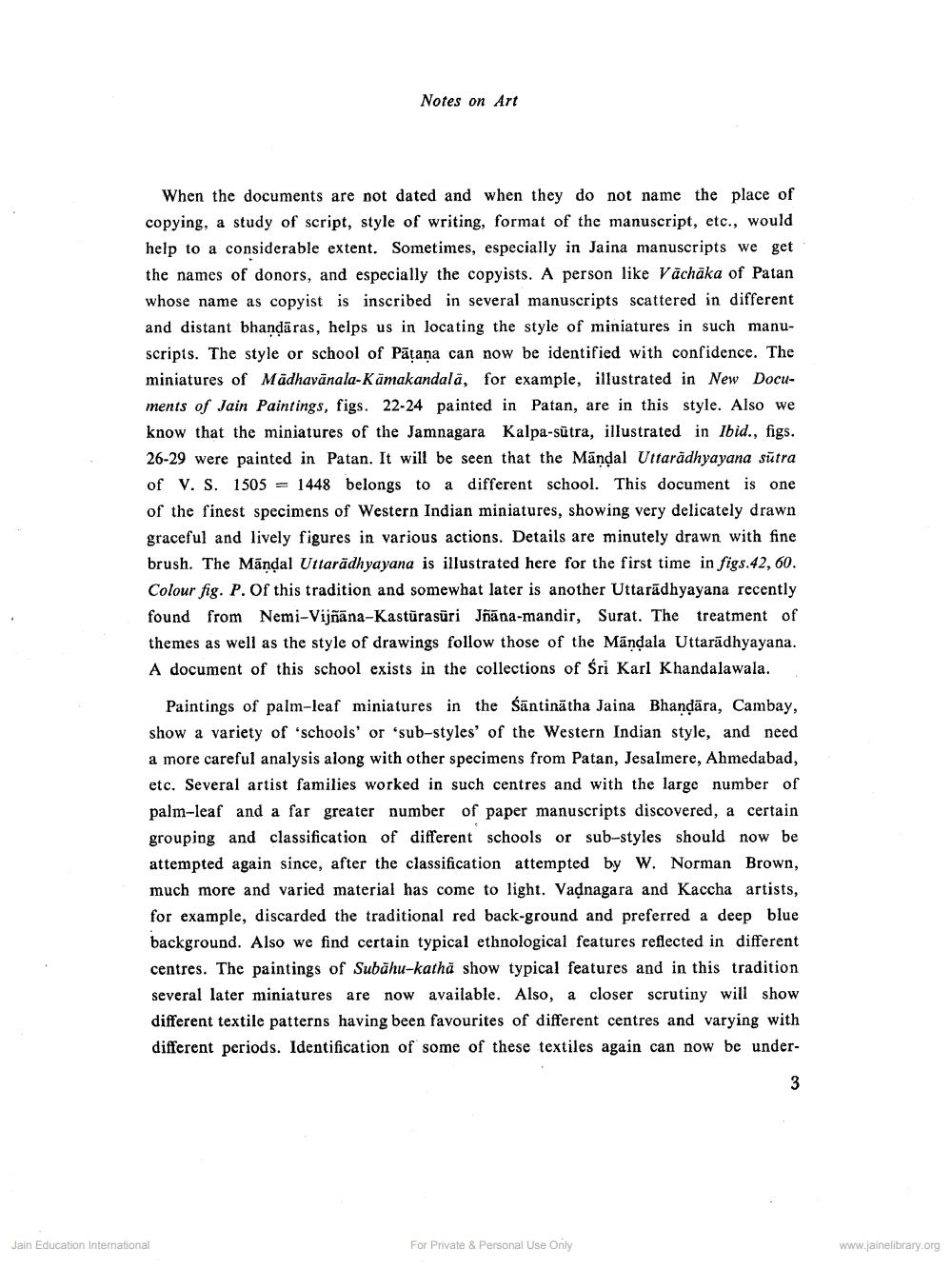________________
Notes on Art
When the documents are not dated and when they do not name the place of copying, a study of script, style of writing, format of the manuscript, etc., would help to a considerable extent. Sometimes, especially in Jaina manuscripts we get the names of donors, and especially the copyists. A person like Vächāka of Patan whose name as copyist is inscribed in several manuscripts scattered in different and distant bhandaras, helps us in locating the style of miniatures in such manuscripts. The style or school of Patana can now be identified with confidence. The miniatures of Madhavānala-Kamakandala, for example, illustrated in New Documents of Jain Paintings, figs. 22-24 painted in Patan, are in this style. Also we know that the miniatures of the Jamnagara Kalpa-sutra, illustrated in Ibid., figs. 26-29 were painted in Patan. It will be seen that the Mandal Uttaradhyayana sūtra of V. S. 1505 = 1448 belongs to a different school. This document is one of the finest specimens of Western Indian miniatures, showing very delicately drawn graceful and lively figures in various actions. Details are minutely drawn with fine brush. The Mandal Uttaradhyayana is illustrated here for the first time in figs.42, 60. Colour fig. P. Of this tradition and somewhat later is another Uttaradhyayana recently found from Nemi-Vijñāna-Kastūrasūri Jnana-mandir, Surat. The treatment of themes as well as the style of drawings follow those of the Mandala Uttaradhyayana. A document of this school exists in the collections of Śri Karl Khandalawala.
Paintings of palm-leaf miniatures in the Santinatha Jaina Bhandara, Cambay, show a variety of 'schools' or 'sub-styles' of the Western Indian style, and need a more careful analysis along with other specimens from Patan, Jesalmere, Ahmedabad, etc. Several artist families worked in such centres and with the large number of palm-leaf and a far greater number of paper manuscripts discovered, a certain grouping and classification of different schools or sub-styles should now be attempted again since, after the classification attempted by W. Norman Brown, much more and varied material has come to light. Vadnagara and Kaccha artists, for example, discarded the traditional red back-ground and preferred a deep blue background. Also we find certain typical ethnological features reflected in different centres. The paintings of Subahu-katha show typical features and in this tradition several later miniatures are now available. Also, a closer scrutiny will show different textile patterns having been favourites of different centres and varying with different periods. Identification of some of these textiles again can now be under
3
Jain Education International
For Private & Personal Use Only
www.jainelibrary.org




